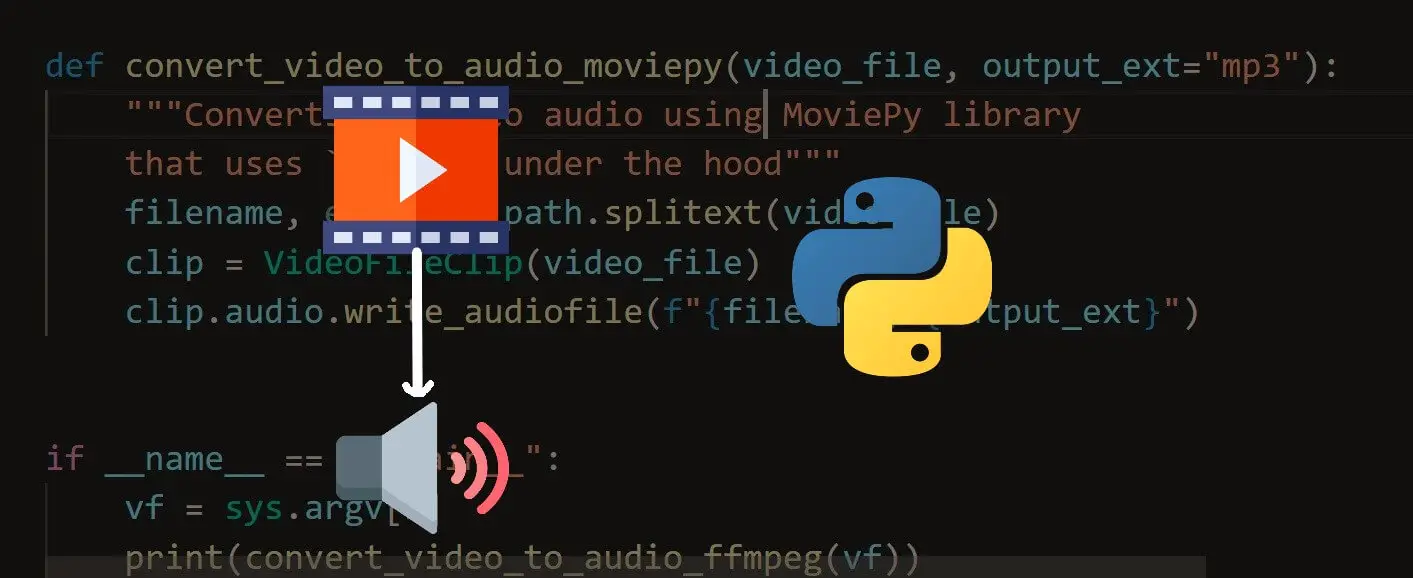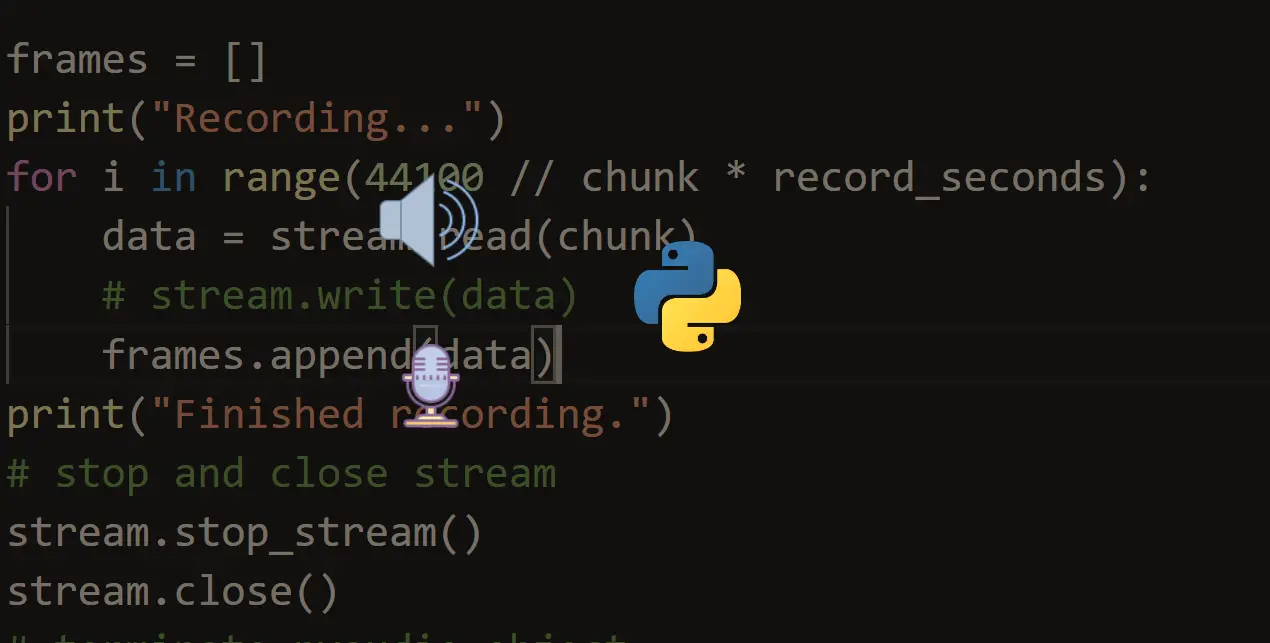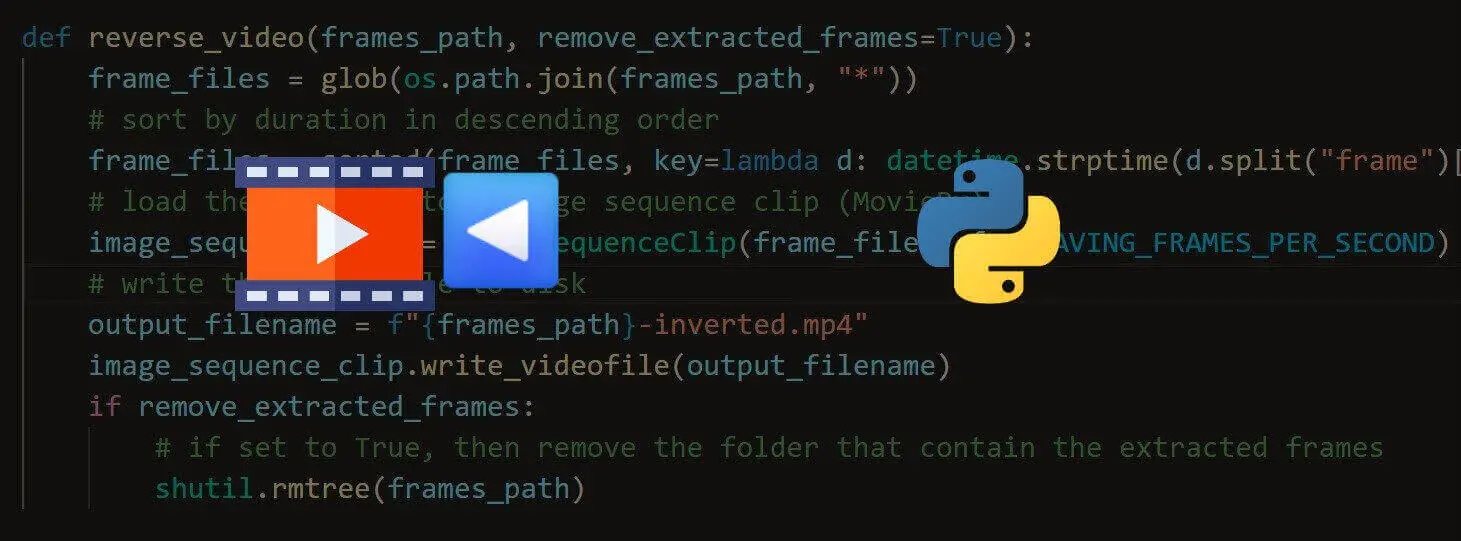Struggling with multiple programming languages? No worries. Our Code Converter has got you covered. Give it a go!
There are many cases where you want to convert your audio file into a video, such as uploading audio to YouTube or something similar. In this tutorial, you will learn how to add a static image to an audio file to form a video file with Python using the MoviePy library.
Before we get started with the code, let's install MoviePy:
$ pip install moviepyOpen up a new Python file and write the following:
from moviepy.editor import AudioFileClip, ImageClip
def add_static_image_to_audio(image_path, audio_path, output_path):
"""Create and save a video file to `output_path` after
combining a static image that is located in `image_path`
with an audio file in `audio_path`"""
# create the audio clip object
audio_clip = AudioFileClip(audio_path)
# create the image clip object
image_clip = ImageClip(image_path)
# use set_audio method from image clip to combine the audio with the image
video_clip = image_clip.set_audio(audio_clip)
# specify the duration of the new clip to be the duration of the audio clip
video_clip.duration = audio_clip.duration
# set the FPS to 1
video_clip.fps = 1
# write the resuling video clip
video_clip.write_videofile(output_path)The add_static_image_to_audio() function does everything, it expects the image path, audio path, and the output video path, and then:
- It creates the
AudioFileClip()instance from the audio_path. - It also created the
ImageClip()instance from the image_path. - We add the audio to the ImageClip instance using the
set_audio()method which returns a new clip. - We set the duration of this new video clip to the duration of the audio clip (you can change it to any length you want, in seconds).
- We also set the FPS, setting to 1 means there is one frame per second. It's required for any video clip by the way.
- Finally, we use the
write_videofile()method to save the resulting video file.
Now let's use the argparse module to parse command-line arguments:
if __name__ == "__main__":
import argparse
parser = argparse.ArgumentParser(description="Simple Python script to add a static image to an audio to make a video")
parser.add_argument("image", help="The image path")
parser.add_argument("audio", help="The audio path")
parser.add_argument("output", help="The output video file path")
args = parser.parse_args()
add_static_image_to_audio(args.image, args.audio, args.output)Awesome, let's test it:
$ python add_photo_to_audio.py --helpOutput:
usage: add_photo_to_audio.py [-h] image audio output
Simple Python script to add a static image to an audio to make a video
positional arguments:
image The image path
audio The audio path
output The output video file path
optional arguments:
-h, --help show this help message and exitGreat, let's try it out with this image and this audio file:
$ python add_photo_to_audio.py directed-by-robert-image.jpg "Directed-by-Robert-B.-Weide-theme.mp3" output.mp4The output.mp4 file will appear in the current directory:

Alright, that's it for the tutorial! Check the full code here.
Learn also: How to Extract Audio from Video in Python.
Happy coding ♥
Ready for more? Dive deeper into coding with our AI-powered Code Explainer. Don't miss it!
View Full Code Convert My Code




Got a coding query or need some guidance before you comment? Check out this Python Code Assistant for expert advice and handy tips. It's like having a coding tutor right in your fingertips!